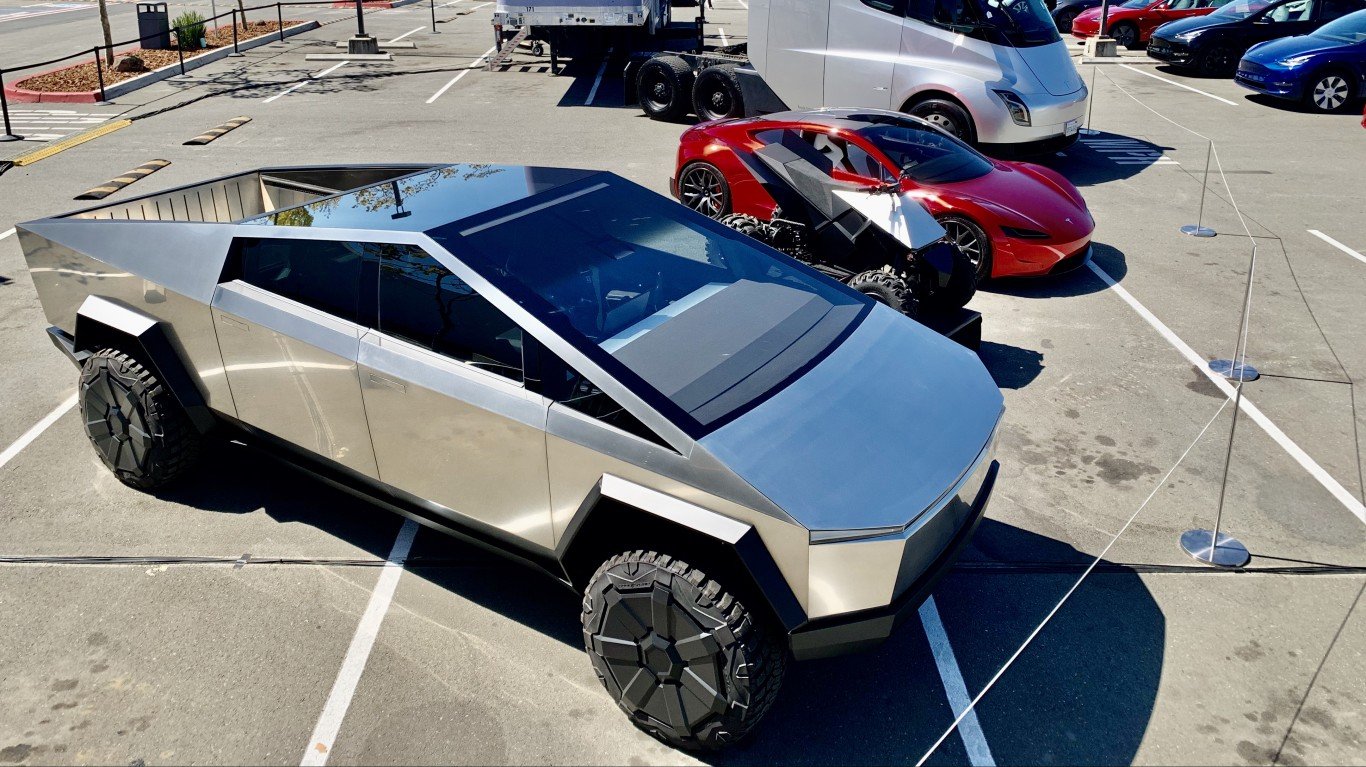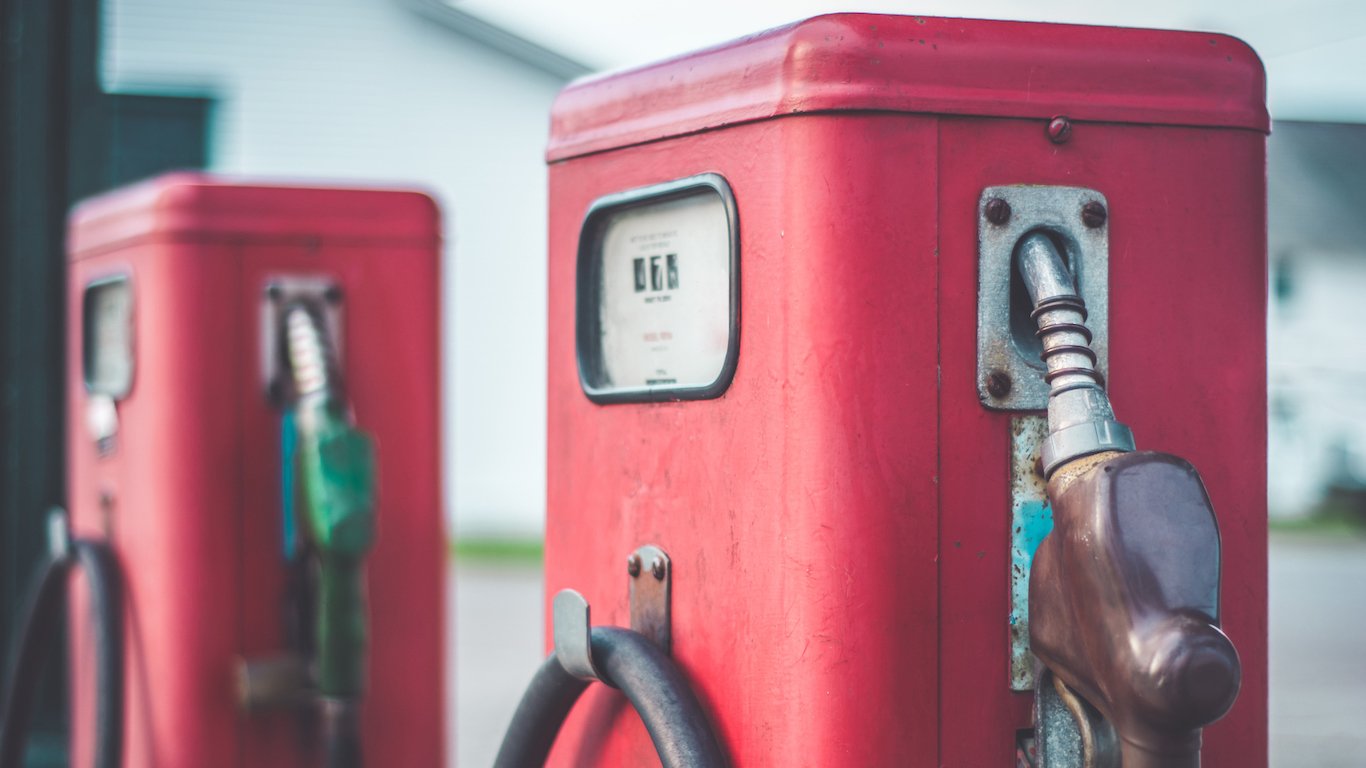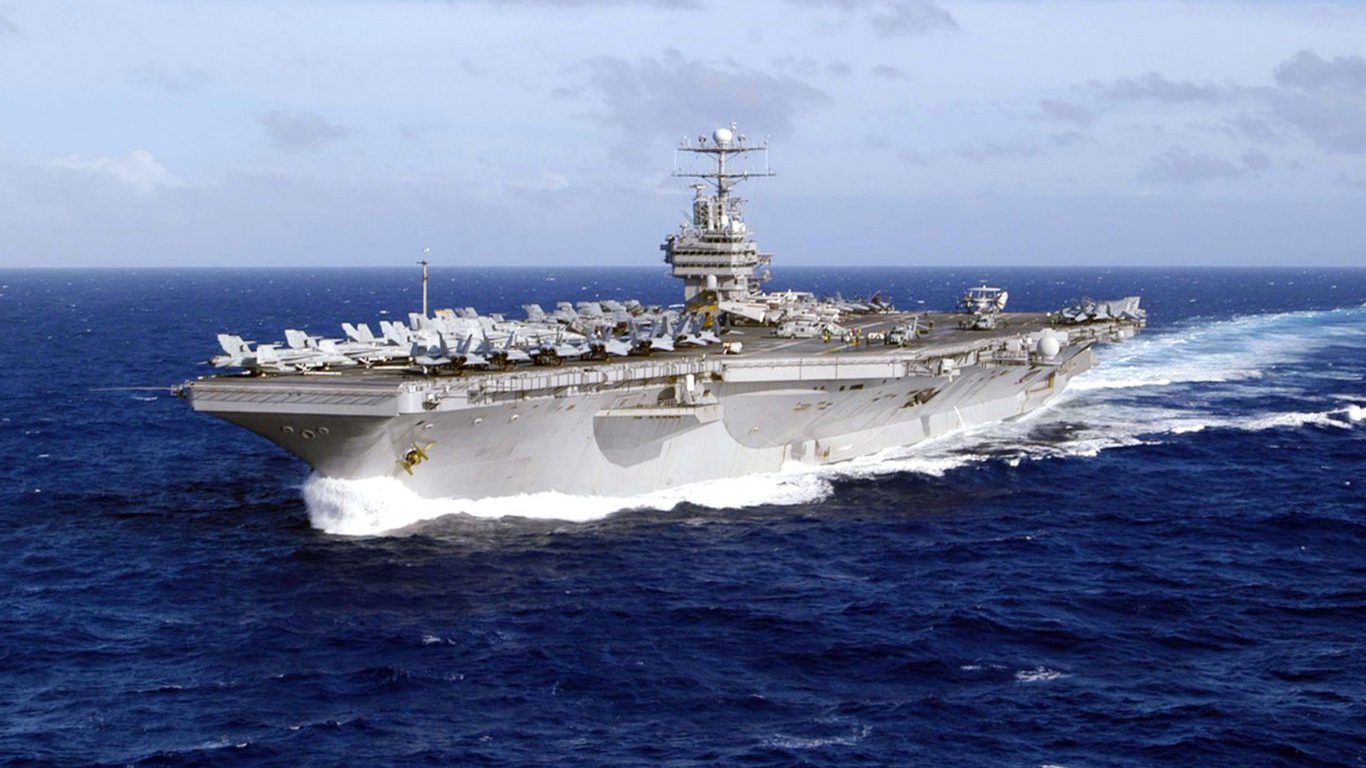

Few things stick in the news headlines quite as well as the fluctuations in gasoline prices. In our car-obsessed culture, gasoline is literally the lifeblood of our civilization. Small changes, whether up or down, in the price at the pump can cause widespread panic, political turmoil, and economic upheaval. Ever since the introduction of gasoline for public use at the beginning of the 20th century, it has been a key factor in U.S. economics and foreign policy. Access to crude oil first became extremely valuable during World War I and remains a source of tension between the Western world and countries that control that flow of oil.
Suffice it to say, that gasoline has had quite a turbulent life so far. Sometimes it feels as though gasoline prices are always going up, or that the conversation around gasoline and its use, access, and pollution is a recent development, but this has been the case ever since the invention of the automobile. Here, we will cover the price of gasoline through the decades, the significant events that affected that price, and how it all led to where we are today.
Background on Gasoline Prices in the United States
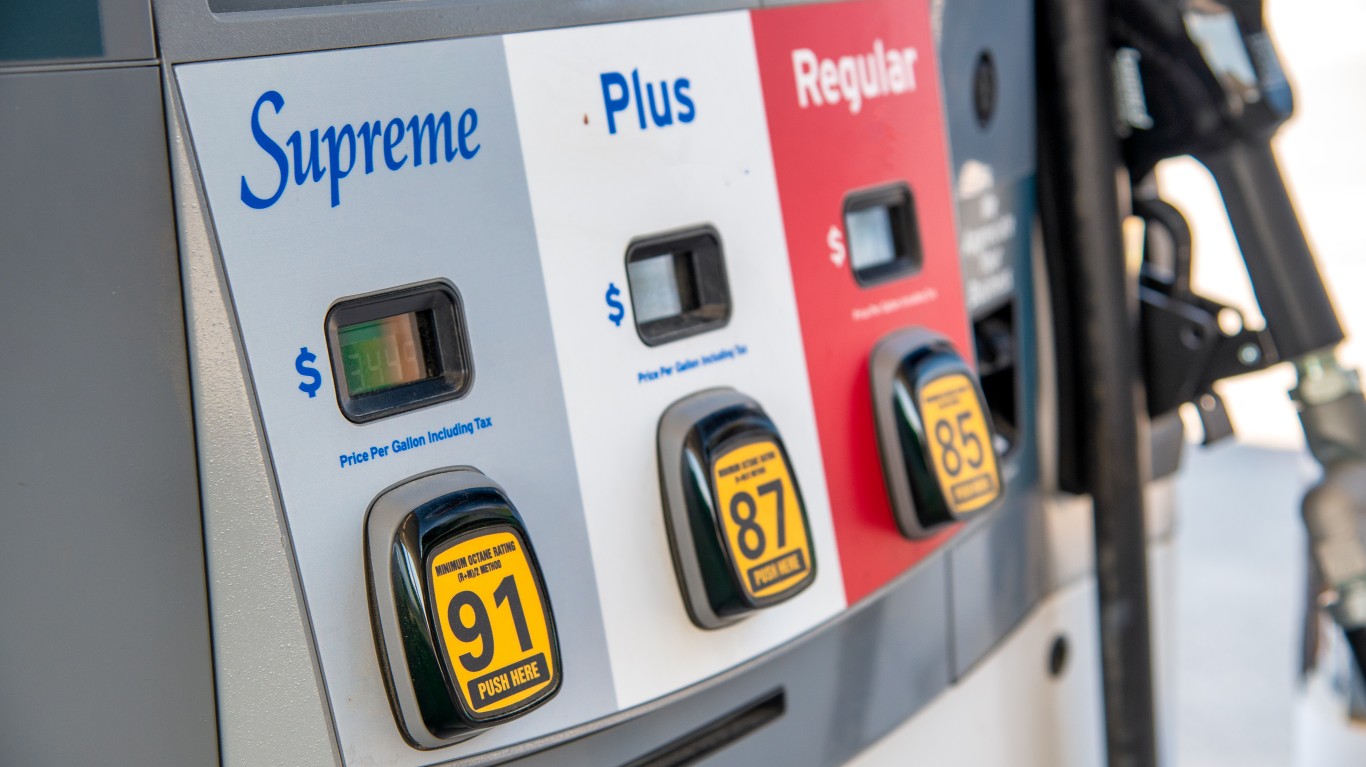
The history and price of gasoline is the history of war. The production of gasoline, its refinement, improvement, and the evolution of the combustion engine are inseparably tied with the evolution of war through the 20th century. As countries fought and died over access to oil, the technological advancements made during that struggle found their way into the consumer markets.
It might seem like the price of gasoline is all some political pundits and politicians care about. That’s because, to an extent, it is. People in the United States pay a significantly lower price for gasoline than the rest of the world. This isn’t by chance. The American economic system is almost entirely based on oil and gasoline and the U.S. has made dedicated efforts to not only strengthen that base but ensure it remains cheap and accessible.
U.S. politicians have used economic pressure, military power, and domestic production to guarantee we always have access to cheap gasoline. As a result, these low prices are unique to the United States. We include the price at the pump and the price adjusted for inflation. We selected the highest and lowest prices based on their contemporary price, not on their adjusted prices.
1920s
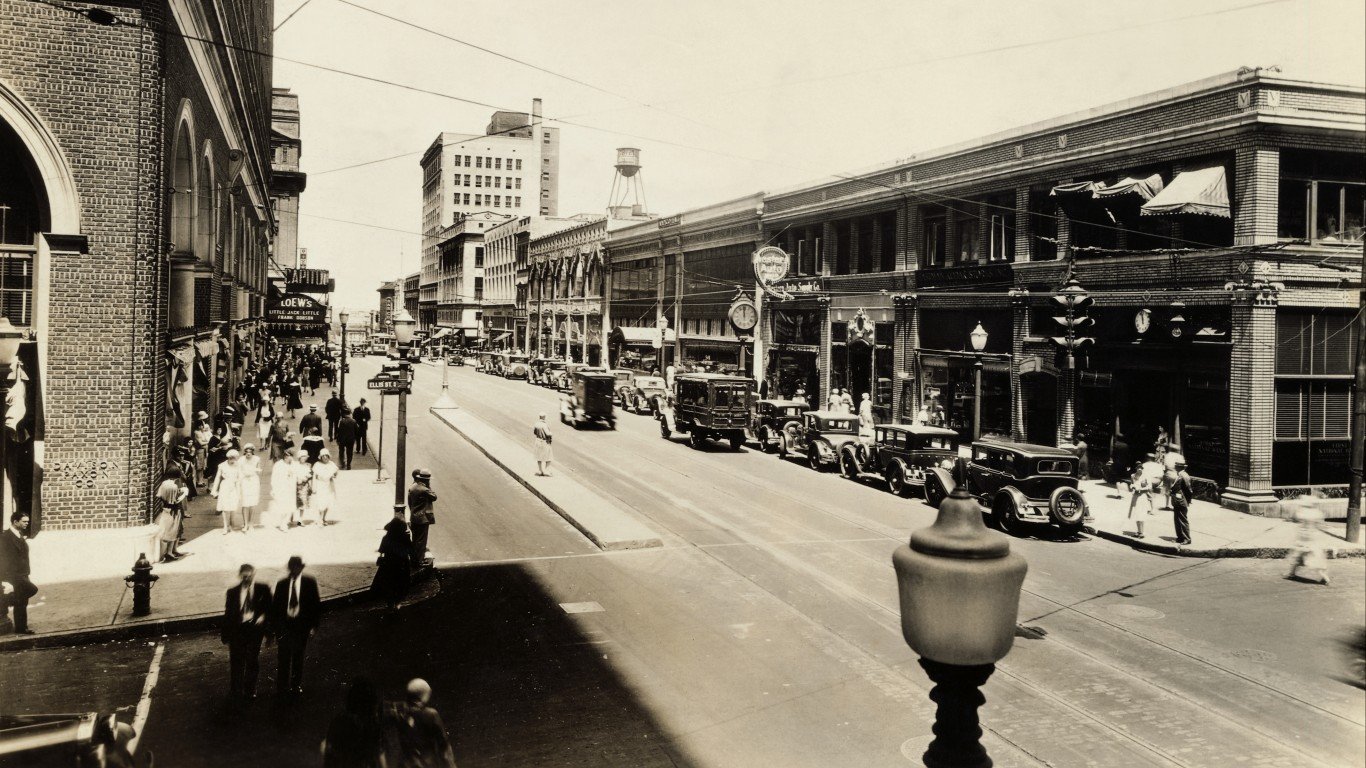
- Avg. U.S. gas prices per gallon: $0.21
- Adjusted for inflation: $3.59
At the conclusion of the 1920s, Western society had largely transitioned from horses and carriages to automobiles and trucks. Car culture had firmly dug its roots into American society. It was during this time that, while trying to find more efficient forms of gasoline, the controversy around leaded gasoline began. Gas companies could choose between ethanol-infused gasoline or leaded gasoline, but because ethanol could not be patented, they opted for leaded gasoline. This made gas more expensive and more dangerous. Numerous deaths followed due to the lead in the gasoline, so gas companies funded several flawed studies that showed leaded gasoline was not dangerous. The deaths continued.
1930s
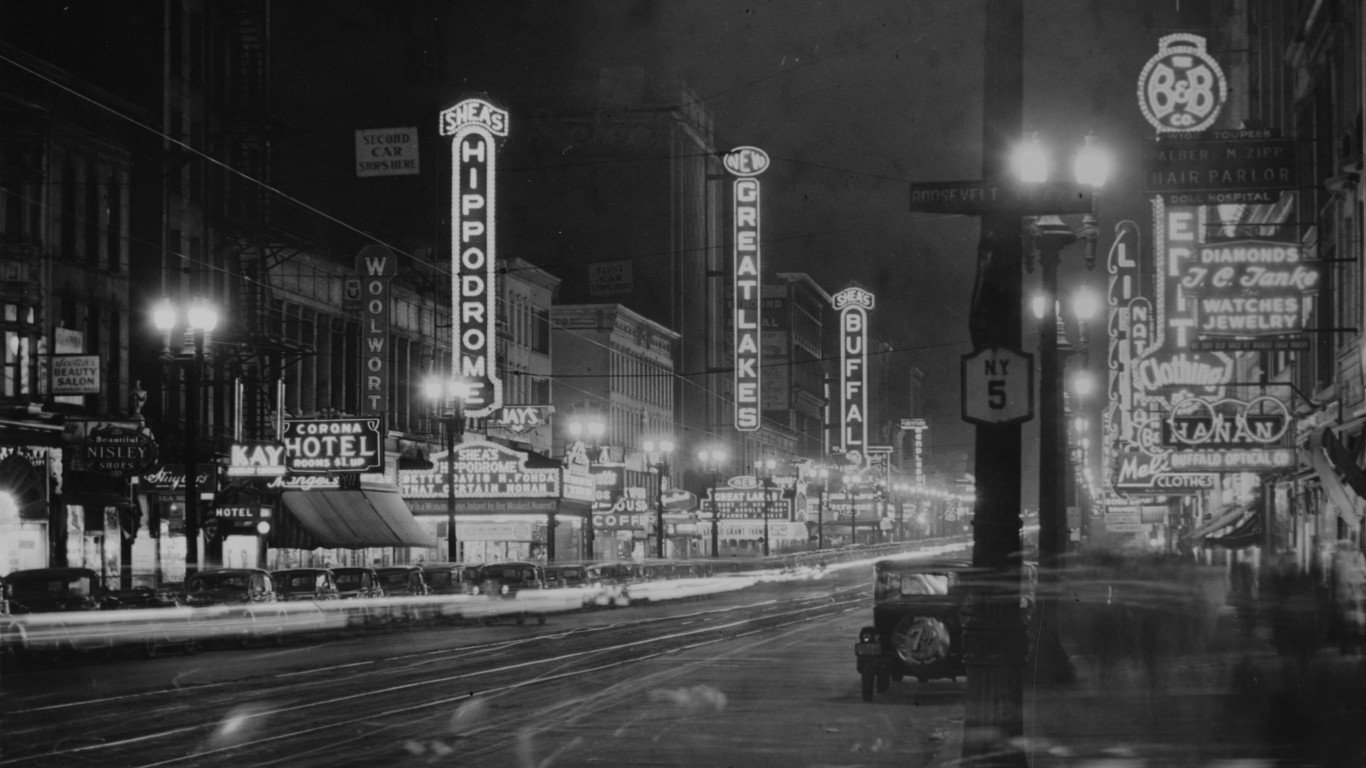
- Lowest Avg. U.S. gas prices per gallon: $0.17 (1931)
- Adjusted for inflation: $3.27
- Highest Avg. U.S. gas prices per gallon $0.20 (1930, 1937, 1938)
- Adjusted for inflation: $4.06
During the 1930s, the United States was suffering through the Great Depression and Europe entered World War II. After the importance of gasoline and oil was demonstrated during WWI, access to oil became a vital war goal for many countries during the conflict. Much of Germany’s offensive campaigns during WWII were motivated by oil. Germany had no natural access to oil and most of its gasoline was synthetic. The Polish invasion and the Soviet invasion both included significant plans to access oil for gasoline. Access to oil also motivated the Japanese to expand their Pacific empire since they had no domestic production, either.
It was during the 1930s that the octane rating of gasoline was adopted and expanded upon. First for aviation, then for military use, followed by commercial applications.
1940s

- Lowest Avg. U.S. gas prices per gallon: $0.27 (1949)
- Adjusted for inflation: $3.32
- Highest Avg. U.S. gas prices per gallon $0.18 (1940)
- Adjusted for inflation: $3.76
World War II reached its peak in the 1940s when the United States entered the war on both fronts. The gasoline supply was stretched almost to its breaking point. Several times, the American forces were forced to wait and let German forces retreat safely because they did not have enough gasoline to advance.
It was after WWII that the United States fully committed itself to the domestic production of gasoline. They saw how important it was to not only prosecute a war but also avoid conflict altogether. The U.S. is now the largest producer of gasoline in the world.
1950s
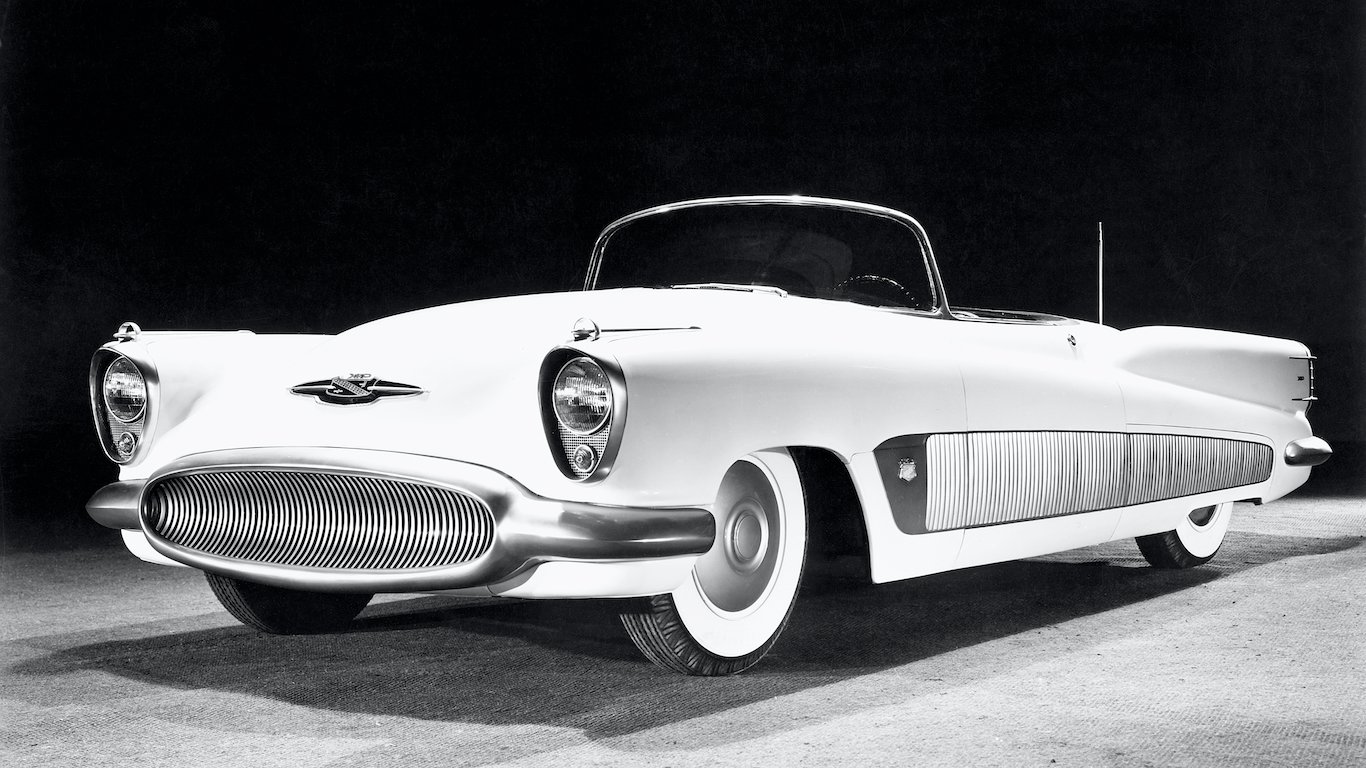
- Lowest Avg. U.S. gas prices per gallon: $0.27 (1950, 1951, 1952)
- Adjusted for inflation: $3.28, $3.04, $2.98
- Highest Avg. U.S. gas prices per gallon $0.31 (1957, 1959)
- Adjusted for inflation: $3.23, $3.12
The United States emerged as the undisputed economic world power after WWII. It used this power to influence politics and economics around the world. Along with this influence, the car culture followed. Countries like Cuba and Iran adopted many American practices which included an obsession with cars, and increasing demand for oil and gasoline.
1960s
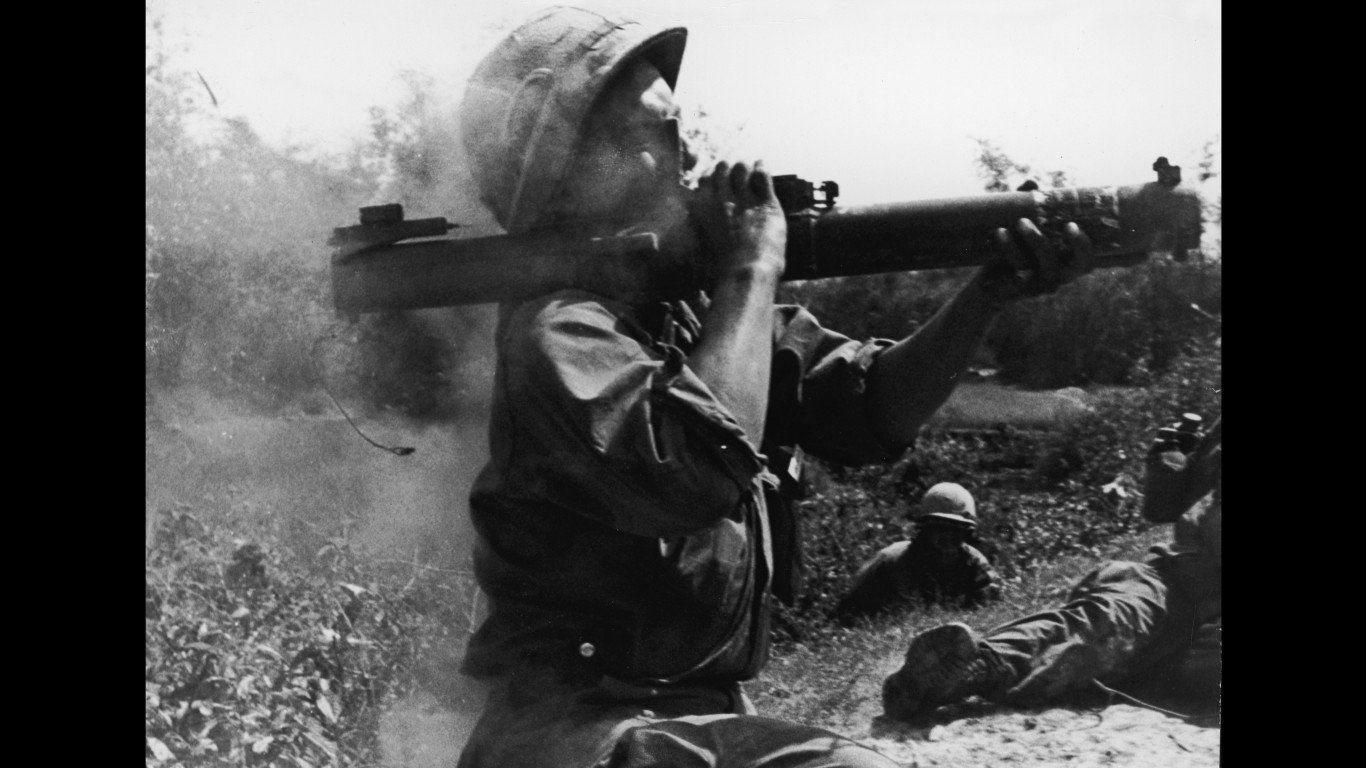
- Lowest Avg. U.S. gas prices per gallon: $0.30 (1964)
- Adjusted for inflation: $2.83
- Highest Avg. U.S. gas prices per gallon $0.35 (1969)
- Adjusted for inflation: $2.79
During the 1960s, American cars moved away from the flashy design of the 50s, and automakers had their most successful decade ever. The Ford (NYSE: F) Mustang was introduced and muscle cars became widely popular. Japanese cars finally started to see success in the U.S. market as well.
1970s

- Lowest Avg. U.S. gas prices per gallon: $0.36 (1970)
- Adjusted for inflation: $2.72
- Highest Avg. U.S. gas prices per gallon $0.86 (1979)
- Adjusted for inflation: $3.47
There were two famous oil crises during the 1970s, one in 1973 and the second in 1979. After the 1973 crisis, many countries instituted rationing, car-free days, or limited which cars could buy gasoline on certain days.
The 1973 oil crisis occurred when members of the OAPEC issued an oil embargo against the countries that supported Israel during the Yom Kippur War. Gas prices rose over 300% during this crisis. The 1979 crisis was a result of a drop in oil production after the Iranian revolution caused, in part, by U.S. intervention in Iranian politics.
It was during this decade that the American public became aware that oil reserves were not endless and that they would not be able to fuel a future of limitless progress. It became clear that a future built on oil and gasoline was not possible without completely destroying the environment.
1980s

- Lowest Avg. U.S. gas prices per gallon: $0.86 1986)
- Adjusted for inflation: $2.30
- Highest Avg. U.S. gas prices per gallon $1.31 (1981)
- Adjusted for inflation: $4.22
The 80s were a hard decade for American automakers and consumers. Low-quality cars and lax standards drove most of the large companies to near bankruptcy. Japanese cars increased in popularity as a result.
On March 24, 1989, an oil tanker owned by Exxon (NYSE: XOM), the Exxon Valdez crashed along the Alaskan coast, spilling between 260,000 to 750,000 barrels of oil into the water and on the beaches. It isn’t the largest oil spill in history, but it has been one of the most damaging. The oil spilled from the crash continues to impact the environment until today.
It was also during this time that the Reagan Administration implemented policies to open federally protected land to oil drilling and reduce the funding for the Environmental Protection Agency.
1990s

- Lowest Avg. U.S. gas prices per gallon: $1.07 (1998)
- Adjusted for inflation: $1.92
- Highest Avg. U.S. gas prices per gallon $1.25 (1996)
- Adjusted for inflation: $2.32
During the 1990s, the American obsession with trucks and SUVs began. The economic boom of the late 90s saw a drastic increase in the sales of these vehicles, and many companies that had never produced a large vehicle before began making them en masse. It was also during this time that safety features like airbags, seatbelts, and more became mandatory.
After the fall of the Soviet Union, oil and natural gas were discovered in many of the new countries. These reserves helped them rebuild their economies.
Iraq invaded Kuwait in 1990 after accusing them of flooding the oil market and driving down oil prices, negatively impacting the Iraqi economy. As a result, in 1991, we experienced the Gulf War Oil, in which the Iraqi military dumped significant amounts of oil, permanently damaging the environment and wildlife in the Persian Gulf.
2000s

- Lowest Avg. U.S. gas prices per gallon: $1.39 (2002)
- Adjusted for inflation: $2.25
- Highest Avg. U.S. gas prices per gallon $3.30 (2008)
- Adjusted for inflation: $4.48
Since the 1980s, the price of a barrel of crude oil had remained under $25. In 2008, however, it soared to $147.30, creating the 2000s energy crisis. This was due to fears of dwindling oil reserves, tensions in the Middle East, and other smaller factors.
As a result, there was a large push to move away from fossil fuels and use more biofuels that could be more easily produced domestically. This created a decrease in the supply of food around the world and an increase in the price of all foods. This then created the 2007 food crisis that severely impacted many of the world’s poorest nations, especially those that were already struggling with food supply.
In 2004, minority groups in Nigeria rose up against the government and foreign oil companies they felt were exploiting them and their land. Oil drilling began in Nigeria in the 1950s and it grew to become the 10th-largest oil producer in the world. The largest of the companies involved, Shell (NYSE:SHEL), quickly overtook politics in the nation, forming a plutocracy in which the Shell corporation effectively made all the decisions for the company due to its large investment. According to researchers, Shell’s presence in Nigeria is the primary factor in why the country is not yet a democracy. Over the course of its operations, Shell has spilled 1.5 million tons of oil into Nigeria’s farms, towns, and waterways. This is equivalent to 50 Exxon Valdez spills. They have destroyed hundreds of kilometers of rainforests through their oil spills, and 240,000 barrels of oil are spilled into the Niger Delta, polluting the fish and food the people eat. This pollution has caused a significant increase in cancer rates, miscarriages, anemia, and other health issues.
2010s
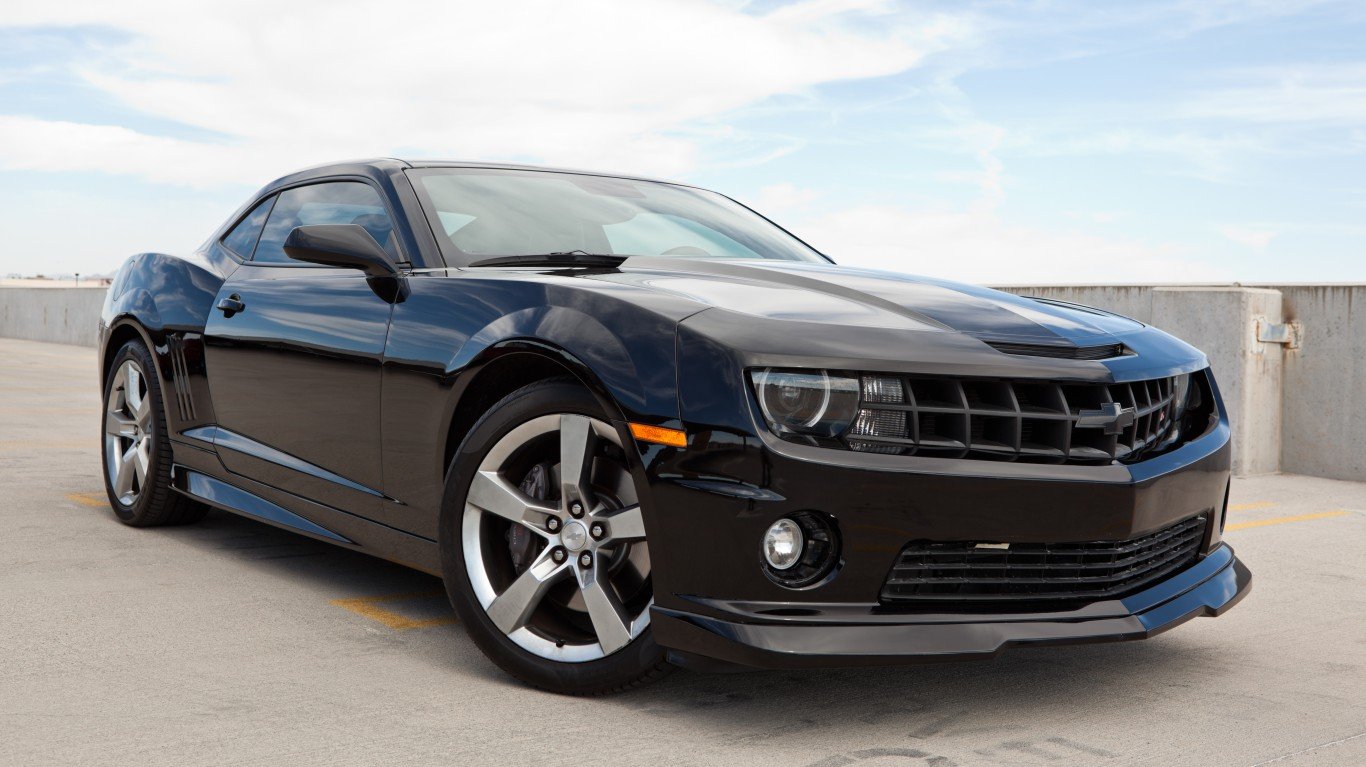
- Lowest Avg. U.S. gas prices per gallon: $2.25 (2016)
- Adjusted for inflation: $2.74
- Highest Avg. U.S. gas prices per gallon $3.68 (2012)
- Adjusted for inflation: $4.69
During the 2010s, conflict and war about and involving oil supply ramped up. Tensions between the U.S. and Middle Eastern states have resulted in the sabotage and seizure of oil tankers. In Libya, civil war broke out between factions seeking to seize control of the Libyan oil fields. Venezuelan president Maduro blamed a recent coup on the United States’ ambition to control their oil reserves.
In 2010, the offshore drilling platform, Deepwater Horizon, owned and operated by BP (NYSE: BP), exploded in the Gulf of Mexico near Louisiana. The explosion killed eleven members of the crew and destroyed the rig itself. The oil that spilled from the disaster has become the worst environmental disaster in the history of the United States.
The year 2012 also saw the highest price of gasoline until today, when adjusted for inflation.
2020s
- Lowest Avg. U.S. gas prices per gallon: $2.26 (2020)
- Adjusted for inflation: $2.55
- Highest Avg. U.S. gas prices per gallon $4.06 (2022)
Here we reach our current decade, and it looks like the trends of rising gas prices are set to continue at a rapid pace. While the prices are rising quickly, they are not at their highest point yet. Currently, prices have fallen from their 2022 peak which was only the 11th highest price ever since the 1920s. Conflicts exacerbated and caused by oil access in the 2010s remain largely unresolved.
Recent consumer investigations revealed that automakers lobbied lawmakers to create loopholes in regulations regarding fuel efficiency and pollution. These loopholes have largely contributed to the outrageous growth in the size, height, and fuel consumption of consumer trucks, leading to the cartoonish and disproportionate trucks available today.
Take This Retirement Quiz To Get Matched With A Financial Advisor (Sponsored)
Take the quiz below to get matched with a financial advisor today.
Each advisor has been vetted by SmartAsset and is held to a fiduciary standard to act in your best interests.
Here’s how it works:
1. Answer SmartAsset advisor match quiz
2. Review your pre-screened matches at your leisure. Check out the advisors’ profiles.
3. Speak with advisors at no cost to you. Have an introductory call on the phone or introduction in person and choose whom to work with in the future
Take the retirement quiz right here.
Thank you for reading! Have some feedback for us?
Contact the 24/7 Wall St. editorial team.
